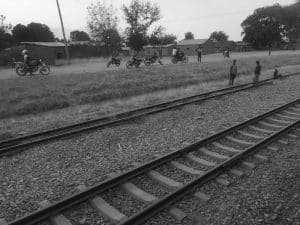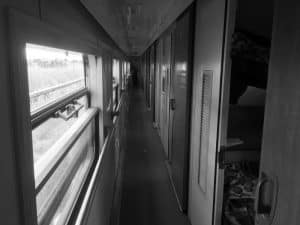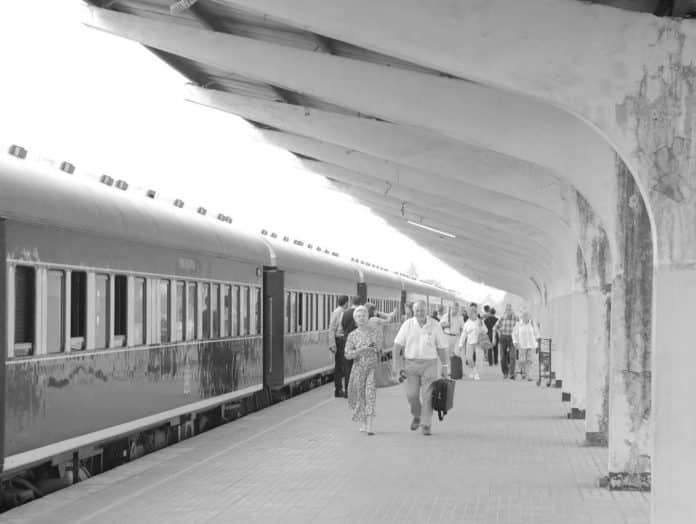Introduction to the Singida Line and its significance
The Singida Line, a crucial component of Tanzania’s expansive railway network, has emerged as a vital artery connecting the country’s remote interior regions with its coastal hubs. This strategic railway corridor has been instrumental in transforming the economic landscape, facilitating the movement of goods, people, and resources across Tanzania’s diverse landscapes.
As you delve into the significance of the Singida Line, you’ll uncover its pivotal role in enhancing Tanzania’s regional connectivity and fostering sustainable development. From its historical origins to its contemporary impact, this railway project has become a symbol of the nation’s commitment to strengthening its infrastructure and improving the lives of its citizens.
Overview of Tanzania’s railway network
Tanzania’s railway network is a complex and multifaceted system that spans across the country, connecting its various regions and facilitating the flow of goods and people. The network consists of several key lines, each serving a unique purpose and catering to the diverse needs of the nation.
Some of the major railway lines in Tanzania include:
- Central Line: Connecting Dar es Salaam to Mwanza and Kigoma, this line is a vital artery for the transport of agricultural products, minerals, and other goods.
- Tanga Line: Running from Tanga to Moshi, this line serves the northeastern region, linking coastal areas with the hinterland.
- Uhuru Line: Stretching from Dar es Salaam to Mbeya, this line plays a crucial role in the movement of goods and resources across southern Tanzania.
- Kigoma Line: Connecting Kigoma to Tabora, this line facilitates the transport of goods and people in the western regions of the country.
The Singida Line, the focus of this article, occupies a strategic position within this intricate network, serving as a crucial link between the interior and the broader transportation infrastructure.
History of the Singida Line and its construction

The Singida Line has a rich history that dates back to the colonial era. Initially conceived as a means to connect the interior regions of Tanzania with the coast, the line’s construction was a monumental undertaking that spanned several decades.
The project was first initiated in the early 20th century, with the initial sections of the line being built by the German colonial administration. However, the construction faced numerous challenges, including the rugged terrain, limited resources, and the disruptions caused by the two World Wars.
It wasn’t until the post-independence era, under the leadership of the Tanzanian government, that the Singida Line project gained renewed momentum. Significant investments were made to complete the line, which eventually connected the city of Singida to the Central Line, providing a vital link between the interior and the broader railway network.
The construction of the Singida Line was a testament to the nation’s determination to integrate its remote regions and unlock their economic potential. It involved the mobilization of resources, the coordination of various stakeholders, and the overcoming of formidable technical and logistical obstacles.
Benefits of the Singida Line for Tanzania’s interior
The Singida Line has brought about a myriad of benefits for the interior regions of Tanzania, transforming the economic and social landscape of these once-isolated areas.
- Improved connectivity: The line has significantly enhanced the connectivity between the interior and the coastal regions, facilitating the movement of goods, people, and resources. This has led to the integration of previously disconnected communities, fostering greater economic and social cohesion.
- Increased market access: The Singida Line has opened up new markets for the agricultural and mineral-rich interior regions, allowing local producers to reach a wider customer base. This has resulted in increased incomes, improved livelihoods, and the diversification of economic activities.
- Reduced transportation costs: The railway line has provided a cost-effective and efficient mode of transportation, reducing the overall costs associated with the movement of goods and people. This has had a positive impact on the prices of consumer goods and the profitability of local businesses.
- Stimulation of economic development: The improved connectivity and market access have stimulated the growth of various industries, from agriculture to mining and manufacturing. This has led to the creation of new jobs, the expansion of existing enterprises, and the emergence of new economic opportunities.
- Enhanced social services: The Singida Line has also facilitated the delivery of essential social services, such as healthcare and education, to the interior regions. This has contributed to the improvement of the overall quality of life for the local population.
Impact of the Singida Line on local businesses and industries
The Singida Line has had a transformative impact on the local businesses and industries operating within the interior regions of Tanzania. This railway corridor has opened up new avenues for growth and diversification, empowering entrepreneurs and fostering the development of various economic sectors.
- Agricultural sector: The Singida Line has been a game-changer for the agricultural sector, enabling farmers to transport their produce to lucrative markets with greater ease. This has led to increased productivity, higher incomes, and the expansion of commercial farming operations.
- Mining and extraction: The improved connectivity provided by the Singida Line has facilitated the transport of minerals and other natural resources from the interior to processing facilities and export hubs. This has stimulated the growth of the mining and extraction industries, creating new employment opportunities and driving economic diversification.
- Manufacturing and processing: The Singida Line has enabled the establishment of manufacturing and processing facilities in the interior regions, as raw materials and finished goods can now be transported more efficiently. This has resulted in the development of value-added industries, boosting the local economy.
- Small and medium enterprises (SMEs): The Singida Line has been a boon for the growth of SMEs, providing them with access to new markets and supply chains. This has empowered local entrepreneurs, fostering the development of innovative businesses and fostering entrepreneurial spirit.
- Tourism and hospitality: The improved accessibility to the interior regions has also opened up new opportunities in the tourism and hospitality sectors. The Singida Line has facilitated the movement of tourists and visitors, contributing to the growth of the local tourism industry.
The impact of the Singida Line on local businesses and industries has been profound, catalyzing economic diversification, job creation, and the overall prosperity of the interior regions.
Challenges faced during the construction of the Singida Line
The construction of the Singida Line was not without its challenges. The project faced a myriad of obstacles, ranging from technical and logistical hurdles to environmental and social barriers. Overcoming these challenges required the concerted efforts of various stakeholders, showcasing the determination and resilience of the Tanzanian people.
- Rugged terrain: The Singida Line traverses through some of the most rugged and challenging terrain in Tanzania, including steep hills, deep valleys, and marshy lowlands. This posed significant engineering challenges, requiring innovative solutions and the deployment of specialized equipment.
- Limited resources: The construction of the Singida Line was hampered by the scarcity of resources, including funding, skilled labor, and construction materials. This necessitated careful planning, resource allocation, and the mobilization of both domestic and international support.
- Environmental concerns: The construction of the railway line had to navigate through environmentally sensitive areas, including wildlife habitats and protected forests. Mitigating the environmental impact and ensuring sustainable development was a crucial consideration throughout the project.
- Resettlement and land acquisition: The construction of the Singida Line required the acquisition of land and the resettlement of local communities. This process had to be carefully managed to ensure the fair and equitable treatment of affected individuals and the minimization of social disruption.
- Coordination and stakeholder management: The successful completion of the Singida Line project required the coordination of multiple stakeholders, including government agencies, local communities, and private sector partners. Navigating the complex web of interests and ensuring effective collaboration was a significant challenge.
Despite these formidable obstacles, the Tanzanian government and its partners persevered, demonstrating their commitment to the development of the nation’s railway infrastructure. The successful completion of the Singida Line stands as a testament to the country’s resilience and its unwavering dedication to transforming its interior regions.
Future developments and plans for the Singida Line
As the Singida Line continues to play a pivotal role in Tanzania’s transportation network, the government and its partners are actively exploring ways to further enhance its capabilities and unlock its full potential.
- Capacity expansion: There are plans to expand the capacity of the Singida Line, including the construction of additional tracks, the upgrading of existing infrastructure, and the deployment of more efficient rolling stock. This will enable the line to handle increased volumes of freight and passenger traffic, catering to the growing demands of the interior regions.
- Intermodal connectivity: Efforts are underway to strengthen the intermodal connectivity of the Singida Line, integrating it seamlessly with other modes of transportation, such as roads, ports, and airports. This will create a more comprehensive and efficient transportation network, enhancing the movement of goods and people across Tanzania.
- Technological upgrades: The Singida Line is poised to undergo technological upgrades, including the implementation of advanced signaling systems, the adoption of digital monitoring and control technologies, and the integration of renewable energy sources. These innovations will improve the line’s operational efficiency, safety, and sustainability.
- Freight and logistics hubs: The government is exploring the development of strategic freight and logistics hubs along the Singida Line, creating centers of economic activity and facilitating the efficient distribution of goods. These hubs will serve as vital nodes in the country’s supply chain, fostering the growth of industries and businesses.
- Passenger services: While the Singida Line has primarily focused on freight transportation, there are plans to enhance its passenger services, providing residents of the interior regions with more convenient and affordable options for travel. This will improve access to essential services and strengthen social cohesion.
By capitalizing on these future developments and plans, the Singida Line will continue to play a pivotal role in Tanzania’s economic and social transformation, cementing its position as a vital component of the nation’s transportation infrastructure.
Importance of railway infrastructure for economic growth

The Singida Line is a testament to the critical role that railway infrastructure plays in driving economic growth and development. As a key component of Tanzania’s broader transportation network, this railway corridor has been instrumental in unlocking the economic potential of the country’s interior regions.
- Improved connectivity: The Singida Line has bridged the gap between the interior and the coastal areas, facilitating the seamless movement of goods, people, and resources. This enhanced connectivity has enabled the integration of previously isolated communities, fostering greater economic and social integration.
- Reduced transportation costs: The railway line has provided a cost-effective and efficient mode of transportation, reducing the overall costs associated with the movement of goods and people. This has had a positive impact on the prices of consumer goods and the profitability of local businesses, enhancing the competitiveness of Tanzania’s economy.
- Stimulation of economic diversification: The Singida Line has catalyzed the growth of various industries, from agriculture to mining and manufacturing, by providing improved market access and supply chain integration. This has led to the diversification of the local economy, reducing dependence on a single sector and fostering sustainable development.
- Facilitation of trade and investment: The enhanced connectivity and improved logistics offered by the Singida Line have made Tanzania’s interior regions more attractive for domestic and foreign investment. This has attracted new businesses, stimulated trade, and generated employment opportunities, contributing to the country’s overall economic growth.
- Strengthening of regional integration: The Singida Line’s integration with Tanzania’s broader railway network has strengthened the country’s regional connectivity, facilitating the movement of goods and people across borders. This has enhanced Tanzania’s position as a hub for regional trade and commerce, reinforcing its role as a key player in the East African economic landscape.
By recognizing the pivotal importance of railway infrastructure for economic growth, Tanzania has demonstrated its commitment to leveraging its transportation assets to drive sustainable development and improve the livelihoods of its citizens.
Comparison of the Singida Line with other railway projects in Tanzania
The Singida Line is one of several railway projects that have been undertaken in Tanzania, each with its unique characteristics and objectives. A comparative analysis of the Singida Line with other notable railway initiatives in the country can provide valuable insights into the broader transportation landscape and the strategic role of the Singida Line within it.
- Central Line: The Central Line, connecting Dar es Salaam to Mwanza and Kigoma, is Tanzania’s oldest and most extensive railway network. While the Central Line serves as the backbone of the country’s transportation system, the Singida Line complements it by providing a vital link to the interior regions, expanding the reach and connectivity of the overall network.
- Tanga Line: The Tanga Line, running from Tanga to Moshi, primarily serves the northeastern regions of Tanzania, focusing on the transport of agricultural products and minerals. In contrast, the Singida Line’s focus is on integrating the central and western interior regions, diversifying the transportation options available to these areas.
- Uhuru Line: The Uhuru Line, stretching from Dar es Salaam to Mbeya, plays a crucial role in the movement of goods and resources across southern Tanzania. While the Uhuru Line and the Singida Line serve different geographical areas, they both contribute to the overall strengthening of Tanzania’s transportation infrastructure, enhancing the country’s economic resilience.
- Kigoma Line: The Kigoma Line, connecting Kigoma to Tabora, serves the western regions of Tanzania, facilitating the transport of goods and people in this area. The Singida Line’s strategic location and its integration with the Kigoma Line have created synergies, enabling the efficient movement of resources and the expansion of economic opportunities across the western and central interior regions.
By examining the Singida Line in the context of these other railway projects, it becomes evident that the Singida Line is a critical component of Tanzania’s comprehensive transportation strategy. Its unique positioning and the complementary nature of its services have contributed to the overall strengthening of the country’s railway network, enhancing connectivity, economic integration, and the potential for sustainable development.
Conclusion: The potential of the Singida Line in transforming Tanzania’s interior
The Singida Line stands as a testament to Tanzania’s unwavering commitment to the development of its transportation infrastructure and the transformation of its interior regions. This strategic railway corridor has proven to be a catalyst for economic growth, social integration, and the unlocking of the vast potential that lies within the country’s heartland.
Through the Singida Line, Tanzania has bridged the gap between its coastal areas and its interior, facilitating the seamless movement of goods, people, and resources. This enhanced connectivity has fostered the integration of previously isolated communities, empowering local businesses, and stimulating the diversification of economic activities.
The impact of the Singida Line extends beyond just transportation. It has been instrumental in improving access to essential services, such as healthcare and education, in the interior regions, contributing to the overall well-being of the population. Furthermore, the line’s role in strengthening regional integration has reinforced Tanzania’s position as a key player in the East African economic landscape.
As the Singida Line continues to evolve, with plans for capacity expansion, technological upgrades, and the development of intermodal connectivity, its potential to transform Tanzania’s interior regions is set to reach new heights. By capitalizing on these future developments, the country can unleash the full economic and social potential of its heartland, driving sustainable growth and improving the livelihoods of its citizens.
For more articles related to Railway and train travel Tanzania, click here!

































